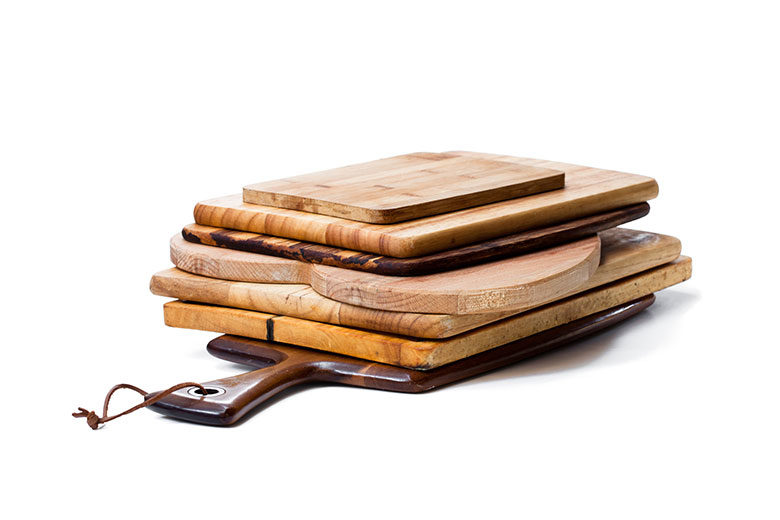
Wooden slabs have served as a cutting surface for food preparation since the prehistoric ages. Although their use hasn’t evolved much, the variety of materials used for cutting boards has expanded, each with its own benefits, uses and care.
Plastic
Inexpensive and lightweight, plastic cutting boards are a popular option. Because they are nonporous, plastic cutting boards are great for carving raw or cooked meats, poultry or seafood. Plastic cutting boards can be washed by hand using hot, soapy water and should be completely dry before storing. They also are dishwasher-safe, making cleanup and sanitation easier. However, plastic is not as durable as other cutting board materials. Deep grooves and cuts in the board can harbor bacteria and collect moisture, requiring them to be replaced more frequently.
Wood
A more durable material, wood is a common choice for cutting boards — but not all wood is created equal. Harder woods such as maple, teak and acacia are less prone to damage from knives and absorb less water than softer woods such as cypress. Although harder woods are more durable, they also are harder on knives than softer woods, making them more susceptible to dulling or damage.
Since wood is a more porous material, these cutting boards are best for foods such as breads, produce and cheese. While they can be used to cut raw meats, to avoid the possibility of crosscontamination, it is best to use one cutting board for uncooked meats, seafood and poultry, and another for ready-to-eat foods. Wood cutting boards that are not laminated are dishwashersafe, but those that are coated can warp and crack from the high heat of a dishwasher. Instead, wooden boards should be washed by hand with soap and hot water and allowed to dry before storing. To maintain wooden boards and prevent staining or cracking, use a soft cloth or paper towel to rub mineral oil onto the surface after each use.
Bamboo
An eco-friendly and affordable option, bamboo is a durable material for cutting boards. A harder surface than most wood boards, bamboo is less prone to damage and wear caused by knives, making it more resistant to bacteria. Bamboo boards are not dishwasher-safe and should be washed by hand with hot, soapy water and dried completely before storing. They also can be rubbed with mineral oil, if desired, to help retain moisture and maintain durability.
Glass
Although glass cutting boards are durable and easy to clean, they are an extremely loud surface to cut on and are the hardest on knives. This can lead to unwanted and excess wear on knives. Glass cutting boards generally aren’t recommended for food preparation and should be used primarily for decorative purposes or as serveware.
Safety and Usage
To help prevent cross-contamination, use one cutting board for raw meat, poultry and seafood, and one for ready-to-eat foods such as bread, produce and cheese or for a serving tray. This can prevent bacteria or pathogens from raw meat coming into contact with foods that are not cooked.
To keep cutting boards from slipping, place a damp paper towel, dish towel or non-slip mat underneath the board.
Cutting boards should be washed and dried after each use. If used for cutting raw meat, poultry or seafood, the board should be sanitized in addition to washing; use a solution of one tablespoon of unscented bleach to one gallon of water. Flood the surface of the board with the bleach solution and allow to sit for several minutes before rinsing. Air dry the board before storing it.
Replace any cutting board that sustains excessive wear or damage, such as deep grooves or cuts that are hard to clean.
References
Christensen E. Five Ways to Keep Your Cutting Board from Slipping. Kitchn website. Published August 15, 2013. Accessed January 17, 2019.
Cutting Boards and Food Safety. USDA website. Updated August 2, 2013. Accessed February 7, 2019.
Pros & Cons of Different Types Of Cutting Boards. Culinary Depot website. Published June 27, 2016. Accessed December 15, 2018.
Quick history of the cutting board. Wood Cutting Boards website. Accessed December 21, 2018.
Shipman M. Fast Facts about Cutting Boards and Food Safety in Your Kitchen. NC State News website. Published September 23, 2014. Accessed December 15, 2018.








